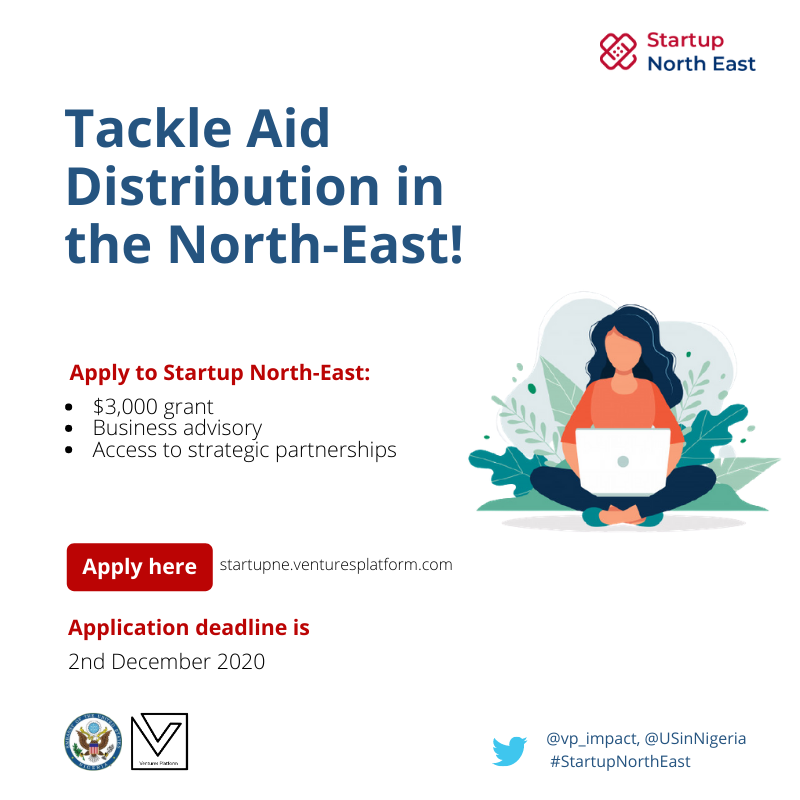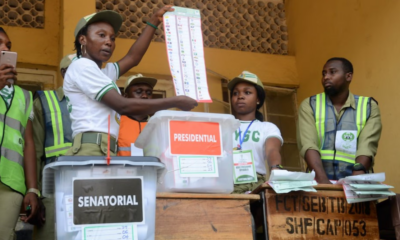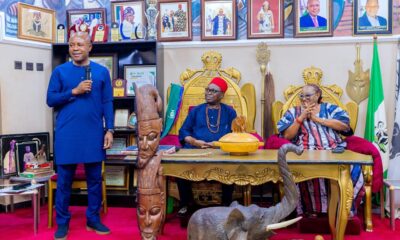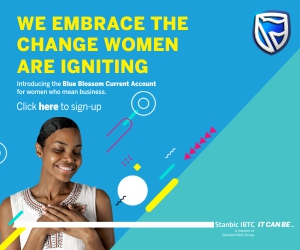GRTech
Ventures Platform Foundation Launches Applications For Start Up North East


Ventures Platform Foundation, the social impact arm of Ventures Platform Hub, has announced a call for applications from Nigerian startups for Start Up North East, an incubation programme for early-stage companies building innovative tech solutions for communities hit by the crisis in North-East Nigeria.
Launched with the support of the U.S. Embassy, the new program is set to offer funding, mentoring and support for start-ups pioneering robust tech solutions which solve the current inefficiencies around aid distribution and data management in relief efforts across the region.
With the entire programme conducted virtually, six successful startups will receive exclusive support for four months as they build, deploy and drive strong traction for solutions which mitigate the operational risks faced by development agencies in North East Nigeria.
Since 2009, according to estimates from the UN, more than two million people have been displaced from their homes due to conflict in the region and more than seven million depend entirely on humanitarian aid to survive.
Recent efforts around aid distribution have encountered major obstacles. With a limited number of organisations delivering aid outside the capital cities of the North Eastern states, a lack of trained personnel and poor identification of households that require relief services, vulnerable communities have been heavily neglected. Equally, the absence of a unified government database that is accessible to development organizations and the prevalence of paper-based methods for data collection has led to inadequate planning and coordination.
Speaking at the launch of the program, Mimshach Obioha, Executive Director at Ventures Platform Foundation, says “Since 2009, we have witnessed vulnerable communities ravaged by malnutrition, a lack of hygiene and sanitation, and poor healthcare in one of Nigeria’s deadliest crises since the new millenium. We cannot allow this to slip off our radar – even in the midst of a global pandemic.”
“At Ventures Platform, we have always believed entrepreneurs will play a critical role in building Africa’s future but through Start-Up North East, we are equipping them with the tools to address some of the most pressing problems which our people face today.
We want mission-driven founders who are ready to improve the livelihoods of underrepresented communities such as those in the North East. We know the talent is there and we are ready to back founders stepping up to make a difference.”
The launch of Start-Up North East marks the latest initiative from Ventures Platform Foundation which addresses critical issues on the continent. The foundation recently awarded $6,000 to seven different start-ups developing tech solutions to assist the fight against the coronavirus as part of its COVID-19 Innovation Challenge.
Commenting on the U.S. Embassy’s partnership with Ventures Platform Foundation, Public Affairs Counselor Aruna Amirthnagayam at the U.S. Embassy, stated “The U.S. Embassy to Nigeria works in concert with the government of Nigeria, the international community and many civil society organizations to address the multi-faceted dimensions of the conflict in the North.
The innovative thinking behind the creation of Start-Up North East brings the determination of young leaders in the North with proven international business methodologies. We are proud to support this incubator program through our Annual Grants Program.”
Additional details on the Start-Up North East program can be found at startupne.venturesplatform.com and applications close on December 2nd, 2020.
-



 GRPolitics4 days ago
GRPolitics4 days agoLet the People’s Voice Stand: A High‑Assertiveness Call to Democratic Integrity in the Digital Age
-



 Spotlight5 days ago
Spotlight5 days agoProphetic Outlook for 2026: Help Is on the Way
-



 GRPolitics5 days ago
GRPolitics5 days agoAmidst Atiku and Obi in ADC, Bola Ahmed Tinubu Retains a Significant Structural Advantage Ahead of the 2027 Election – A Data‑Driven Assessment
-



 Culture4 days ago
Culture4 days agoGovernor Mbah Visits Igwe Greg Ugwu, Enyi 1 of Attakwu, Nkanu West LGA








